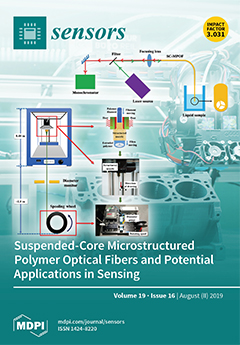In this study, the Level-2 products of the Ocean and Land Colour Instrument (OLCI) data on Sentinel-3A are derived using the Case-2 Regional CoastColour (C2RCC) processor for the SentiNel Application Platform (SNAP) whilst adjusting the specific scatter of Total Suspended Matter (TSM) for the Baltic Sea in order to improve TSM retrieval. The remote sensing product “kd_z90max” (i.e., the depth of the water column from which 90% of the water-leaving irradiance are derived) from C2RCC-SNAP showed a good correlation with in situ Secchi depth (SD). Additionally, a regional in-water algorithm was applied to derive SD from the attenuation coefficient
Kd(489) using a local algorithm. Furthermore, a regional in-water relationship between particle scatter and bench turbidity was applied to generate turbidity from the remote sensing product “iop_bpart” (i.e., the scattering coefficient of marine particles at 443 nm). The spectral shape of the remote sensing reflectance (
Rrs) data extracted from match-up stations was evaluated against reflectance data measured in situ by a tethered Attenuation Coefficient Sensor (TACCS) radiometer. The L2 products were evaluated against in situ data from several dedicated validation campaigns (2016–2018) in the NW Baltic proper. All derived L2 in-water products were statistically compared to in situ data and the results were also compared to results for MERIS validation from the literature and the current S3 Level-2 Water (L2W) standard processor from EUMETSAT. The Chl-a product showed a substantial improvement (MNB 21%, RMSE 88%, APD 96%,
n = 27) compared to concentrations derived from the Medium Resolution Imaging Spectrometer (MERIS), with a strong underestimation of higher values. TSM performed within an error comparable to MERIS data with a mean normalized bias (MNB) 25%, root-mean square error (RMSE) 73%, average absolute percentage difference (APD) 63%
n = 23). Coloured Dissolved Organic Matter (CDOM) absorption retrieval has also improved substantially when using the product “iop_adg” (i.e., the sum of organic detritus and Gelbstoff absorption at 443 nm) as a proxy (MNB 8%, RMSE 56%, APD 54%,
n = 18). The local SD (MNB 6%, RMSE 62%, APD 60%,
n = 35) and turbidity (MNB 3%, RMSE 35%, APD 34%,
n = 29) algorithms showed very good agreement with in situ data. We recommend the use of the SNAP C2RCC with regionally adjusted TSM-specific scatter for water product retrieval as well as the regional turbidity algorithm for Baltic Sea monitoring. Besides documenting the evaluation of the C2RCC processor, this paper may also act as a handbook on the validation of Ocean Colour data.
Full article






